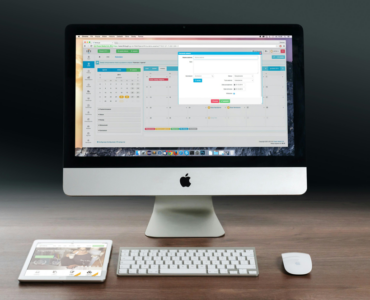Deep links are a powerful tool that enhances user experience by enabling users to navigate directly to specific content within your Flutter app, bypassing the need for manual navigation through multiple screens. While Firebase offers a convenient solution, this guide explores the app_link package as a robust alternative for implementing deep links in your Flutter project.
Understanding Deep Links
Imagine a user clicks a link in an email promoting a specific product within your app (like the image below). A deep link ensures that clicking this link opens the app and takes the user directly to the product page for that item, rather than just launching the app’s homepage. This streamlines the user journey and improves engagement.
Opens in a new windowdocumentation.onesignal.com
Deep Linking with app_link
The app_link package provides a platform-agnostic approach for handling deep links in your Flutter app. Here’s a step-by-step guide on how to use it effectively:
- Installation:
- Add the
app_linkpackage to your Flutter project’spubspec.yamlfile:
- Run
flutter pub getto install the package.
- Add the
- Deep Link Structure Definition:
- Determine the format of your deep links. It can be something like
yourapp://product/123(where “yourapp” is your app ID and “123” is a product ID). You can define multiple patterns for different types of deep links.
- Determine the format of your deep links. It can be something like
- Handling Deep Links on Launch:
- In your
main.dartfile, useWidgetsFlutterBinding.ensureInitialized()to ensure platform-specific setup is complete before callingrunApp. - Inside this method, initialize the
AppLinkobject:
- Create a function
_handleDeepLinkto parse and navigate based on the deep link:
- In your
- Handling Future Deep Links (Optional):
- To handle deep links that users click while the app is already running, use the
AppLinkStreamclass:
Platform-Specific Settings
While the app_link package simplifies platform-specific setup, here’s a breakdown of additional configurations you might need:
While the app_link package offers platform-agnostic deep link handling for Flutter, there might be some minor adjustments needed for Android to ensure smooth functionality. Here’s a step-by-step guide:
Android:
AndroidManifest.xml Configuration (Optional):In most cases, the app_link package should automatically handle the necessary configurations in your AndroidManifest.xml file. However, for more granular control or troubleshooting, you might want to explicitly define the following:
- Intent Filters:
- Add intent filters for your deep link URIs within the
<activity>tag for your main activity (usuallyMainActivity).Define the scheme (e.g.,yourapp), host (optional), and path patterns (e.g.,/product/:id) for your deep links.
- Add intent filters for your deep link URIs within the

- Data Type (Optional):
- If you want to associate your app with a specific MIME type for deep links (e.g.,
text/x-yourapp), add a<data>element with the desired type:
- If you want to associate your app with a specific MIME type for deep links (e.g.,

Activity Declaration (Optional):
- If the
app_linkpackage doesn’t automatically handle the following lines within your<activity>tag, ensure they’re present:

android:launchMode="singleTop" ensures that only a single instance of your main activity is launched for deep links.
android:exported="true" allows external applications to launch your app using deep links.
Testing on Android Device/Emulator
Thoroughly test your deep link functionality on a physical Android device or emulator. Simulate deep links by creating links with your app’s scheme and path patterns (e.g., yourapp://product/123).
Additional Considerations:
- AndroidX Migration: If your project uses AndroidX, ensure you’re using the
androidx.navigation:navigation-dynamic-featurespackage for deep links with dynamic feature modules. - Custom Tabs (Optional): For a more seamless deep link experience, consider using Android’s Custom Tabs to open deep links within a browser-like experience themed with your app’s branding (refer to Android documentation for details).
- These Android-specific configurations might not always be necessary, as the
app_linkpackage often handles them automatically. However, this guide provides a reference for potential adjustments you might need. - Always test your deep links thoroughly on a variety of Android devices or emulators to ensure they work as expected.
iOS:
- Ensure you have Associated Domains configured in your App ID settings on Apple Developer Portal (https://developer.apple.com/documentation/xcode/supporting-associated-domains).
- If applicable, create a well-structured
app_links.jsonfile at the root of your Flutter project. This file helps define the relationship between your deep links and your app. Refer to Apple’s documentation for detailed guidance (https://developer.apple.com/documentation/xcode/supporting-associated-domains).
Benefits of Deep Links with app_link:
- Improved User Experience: Streamlines user journeys and increases engagement.
- Flexibility: You have complete control over the deep link


